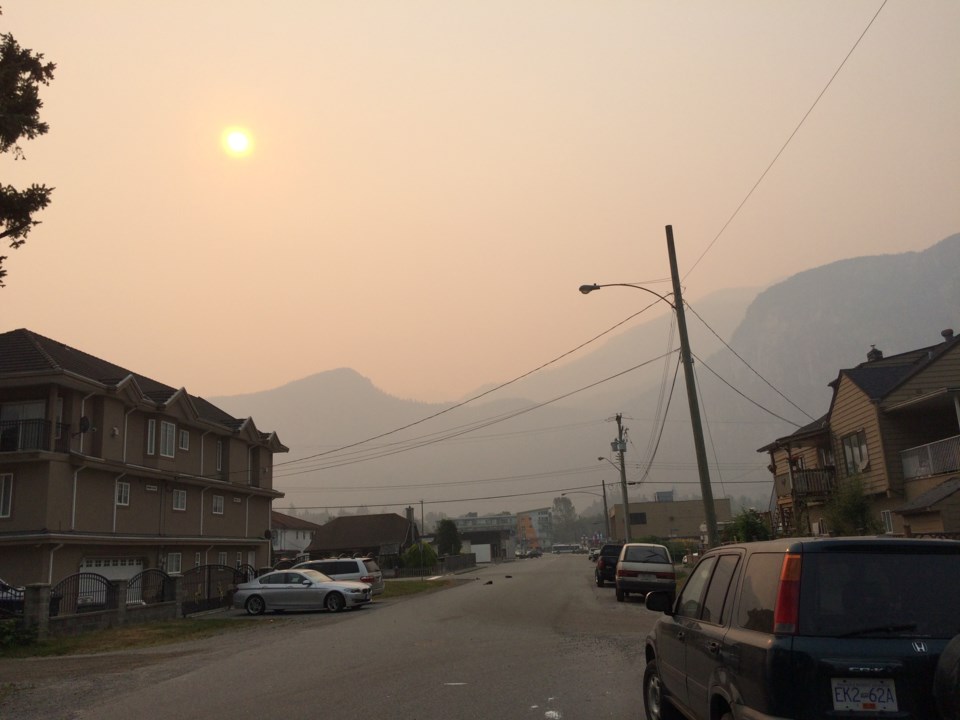Smoke from wildfires across the province has blanketed Squamish in a grey haze, slightly increasing the number of ambulance calls due to respiratory-related problems.
Paramedics find themselves responding to respiratory problems about seven per cent of the time, up from the usual five per cent, said Joe Acker, director of patient caredelivery for BC Ambulance Service in Vancouver.
While the there are no statistics available at the moment for the Squamish area specifically, the numbers represent Squamish, the Lower Mainland and the Sunshine Coast as a whole.
The increase in ambulance callouts comes as measurements of fine particulate matter in the atmosphere have risen to more than three times higher than normal levels.
Air readings taken on Friday morning showed that for every cubic metre there are 85 micrograms of airborne particles that are 25 microns in size.
That was the 24-hour average taken at 9 a.m.
Ideally, air should have an average of about 25 micrograms of airborne particles for every cubic metre.
Acker said that if possible, seniors, the young and those who have breathing conditions should stay inside.
“Those are the ones we really want to make sure they’re not stressing themselves when they’re outside,” he said.
The increase in respiratory calls hasn’t put much of strain on paramedics, because the ambulance service anticipates an uptick in activity this time of year and prepares accordingly, he said.
“It’s a seasonal increase we plan for,” Acker said.
Smoke from wildfires typically doesn’t contain harmful chemicals like smoke from a car or an industrial fire, he noted, but the presence of airborne wood particles can present breathing challenges.
Air quality readings for Squamish seem to confirm that this is the case.
Today, the government’s index rated conditions at seven, which is considered a “high risk” level.
Staying inside is likely the best option for those who want to breathe easy, but anyone who must venture outdoors should wear a mask certified to block fine particulate matter.
The Interior Health Authority says those looking for an effective mask should find a particulate respirator with an N95 rating.
Fitting instructions should be followed closely and regular breaks should be taken to allow your body to recover from the increased breathing effort required.
Dirty and used masks should be discarded regularly.
Those staying inside and using air conditioning should activate recirculation so the filters can work most effectively.
Increased humidity and heat should also be taken into account. If air conditioning can’t be found at home, Acker said people who are feeling too hot should go to a public space such as a library or a mall where cooler ventilation may be found.
It’s also important to stay hydrated, he added.




